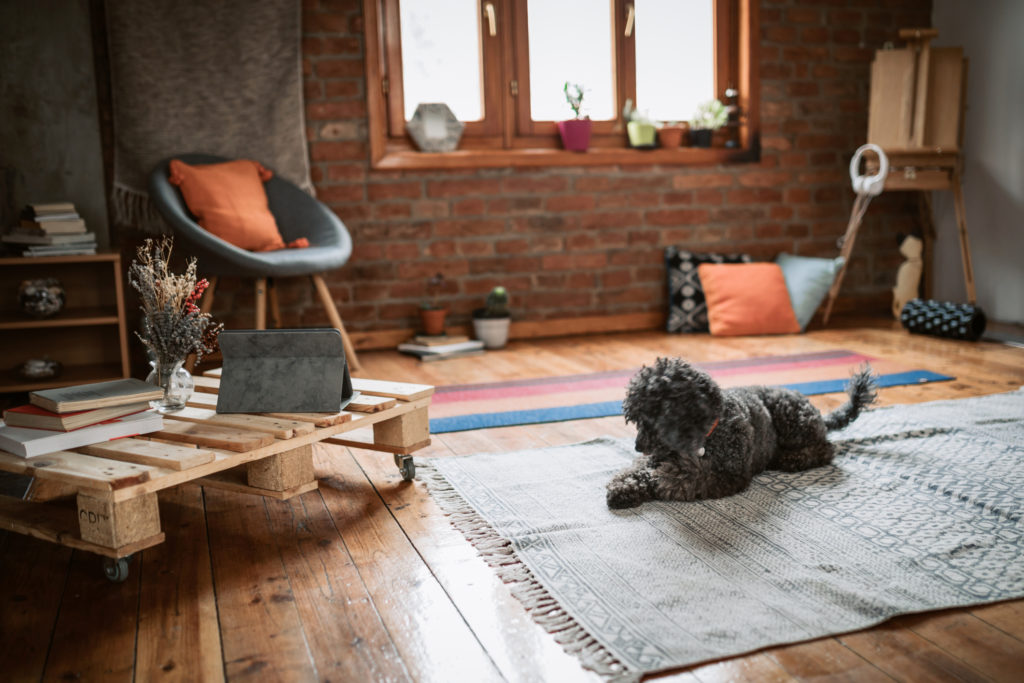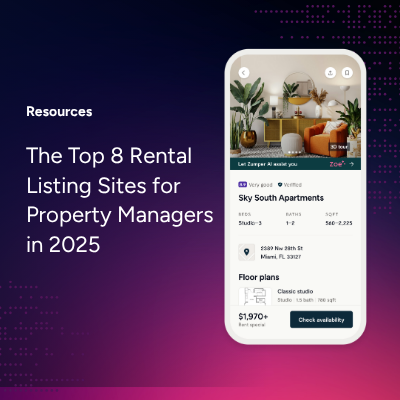
Pet odors are a common problem in rental units where animals reside. It’s important to know how to get rid of pet odor so you can advise renters on proper cleaning procedures during their time in the unit. If smells persist after the renter is gone, you may also need these tips to remove pet odor before a new renter moves in.
Educate Your Renters
Cut down on the amount of time and effort that you have to invest in cleaning properties by educating your renters on the best way to prevent troublesome odors. The easiest way to manage pet odors is to address them on a regular basis. If you wait until the apartment has gone for months without a routine floor cleaning, you’ll find it’s much more difficult to get rid of the pet odor than it would be in a unit that was cleaned regularly. Make sure your renters know how to remove pet odor from the space.
Pet owners should:
- Vacuum at least once a week
- Clean litter boxes twice weekly
- Mop hard surfaces with vinegar and baking soda weekly
- Schedule a hot water extraction carpet cleaning twice a year
- Clean all pet stains promptly using an enzyme-based product
- Wipe down walls monthly with a mixture of water and vinegar
Schedule routine inspections so you can identify potential problems early and remind renters about the best practices for maintaining a clean, odor-free space. Always collect a pet deposit or monthly pet fee that will cover new flooring and paint throughout the unit should the renter fail to maintain their space properly.
Examine the Space With a Black Light
Pet odors are often concentrated in a particular area, but it’s difficult to pinpoint that location based on smell alone. You don’t want to inspect the apartment with your nose to the carpet, but you do want to know where the worst of the odor is coming from. This is where a blacklight comes in handy.
Wait until it’s dusk or later outside, turn out the lights in the property, and inspect the floors and walls using a blacklight. Areas that are soiled will show up as bright spots. You may want to mark these areas off with masking tape so you’ll remember where they are after you turn the lights back on. Once you know where the worst of the smell is coming from, you can direct your efforts accordingly.
Thoroughly Clean the Floors
The floor is typically the biggest culprit when it comes to pet odors in a vacant unit because animals have so much contact with this surface. Begin by spot treating any problem areas that are clearly stained or that lit up under your blacklight. An enzyme cleaner is best for pet stains, particularly for cats. It’s often difficult to figure out how to get rid of cat smells however enzymatic cleaners do the job much better than other products.
After spot treating, give the floors a good all-over cleaning. For hard floors, mop with a solution that’s made from three parts vinegar and one part water. For carpeted areas, begin by sprinkling baking soda over the surface. Let this sit overnight and return to vacuum the next day.
Refresh the Walls
Pet odors may linger on the walls in areas where there’s a lot of pet activity, such as a corner where a litter box was placed. Look for discoloration that will help you pinpoint the worst areas. Wipe these down with the same cleaning mixture of three parts vinegar and one part water that you used on the flooring.
If the smell persists, you may need to repaint using a primer or paint that blocks odors and stains. This is a good way to refresh the unit between renters. Hiring a painting contractor to apply an odor-blocking paint is effective for other smells as well and gives the space a fresh feeling.
Open Windows and Doors
Letting fresh air and sunlight into the unit can do a great deal to help you cut down on pet odors. The ultraviolet radiation in sunlight is a natural disinfectant. Open the blinds throughout the unit to let in as much sun as possible.
Opening the windows and doors will do even more good as long as the weather is nice. You should only do this on a dry day, so you don’t allow moisture into the unit. Excess humidity can lead to microbial growth, which is just as troublesome as pet odors, if not more so. Never leave windows or doors open in an untended space. Consider opening them up while you’re cleaning. This allows fresh air and sun to come in while venting the odors from your cleaning agents so you can breathe more comfortably while you freshen up the unit.
Use an Ozone Generator
An ozone generator produces ozone which reacts to pollutants in the air by breaking them down into less complex molecules. This will often help eliminate odors. As a landlord, you may want to keep a portable ozone generator on hand and let this run for a few days in vacated units to clean the air in between renters.
It’s best to use the ozone generator in an unoccupied space, as the ozone can irritate some people. Allow the generator to clean the air in an empty unit, then turn the system off and open the windows and doors to allow the ozone to escape.
Replace Flooring as Needed
If the previous steps don’t work, you may have to replace the flooring in your rental unit to get rid of the pet odor between renters. New carpeting will resolve most issues with pet smells. Budget accordingly when renting to pet owners so you’re prepared for this expense if necessary.
Knowing how to remove pet odor is important any time you’re renting to individuals with dogs, cats, or other animals. It’s best to limit the number and size of animals in your units to keep smells and damage under control, so you can effectively eliminate smells between renters.



